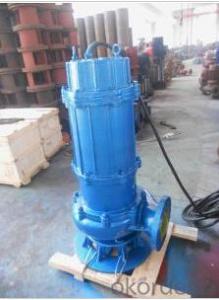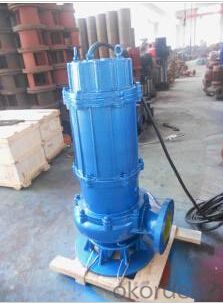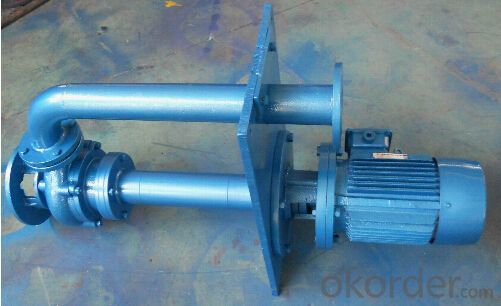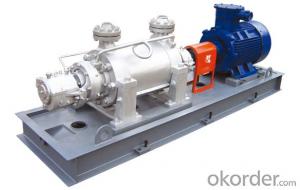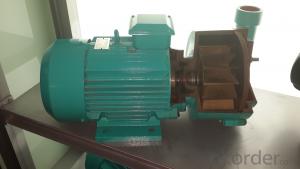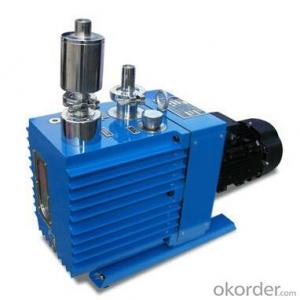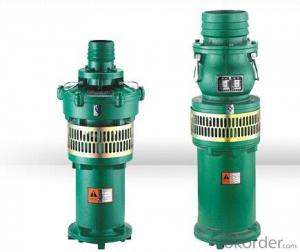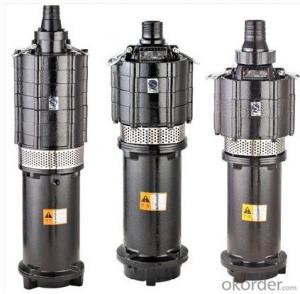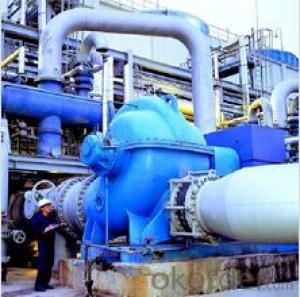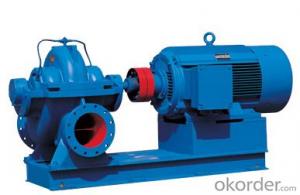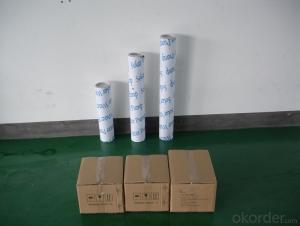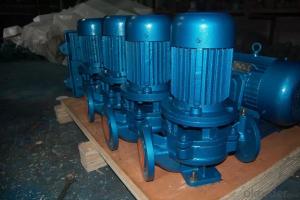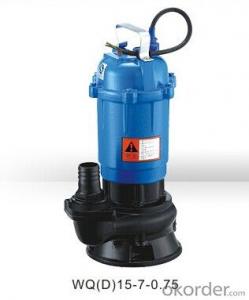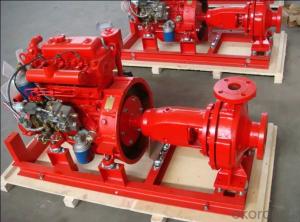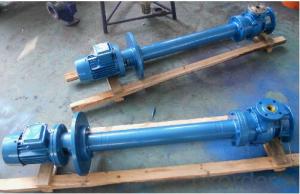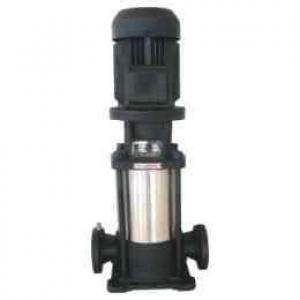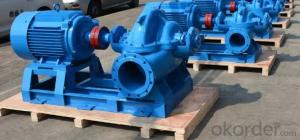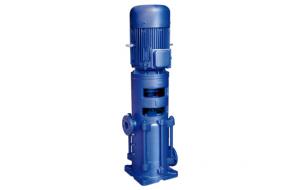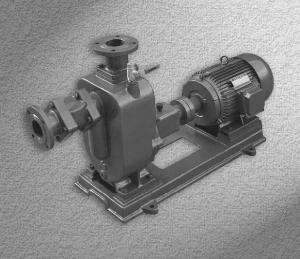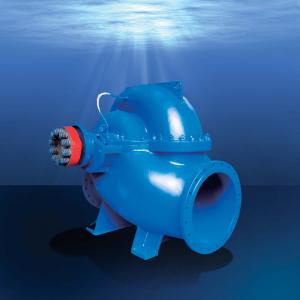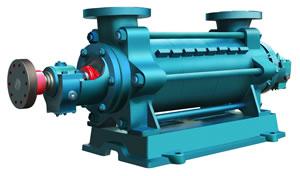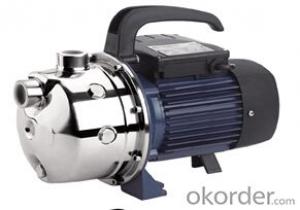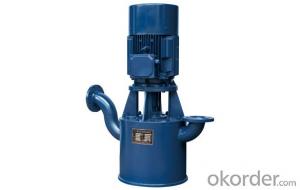Vertical Centrifugal Water Pump for Agriculture
- Loading Port:
- Shanghai
- Payment Terms:
- TT OR LC
- Min Order Qty:
- 1 set
- Supply Capability:
- 10000 set/month
OKorder Service Pledge
OKorder Financial Service
You Might Also Like
Centrifugal Water Pump for Agriculture Application
1.Structure of Centrifugal Water Pump Description
Centrifugal Water Pump is used for transporting pure water or liquids with physical and chemical properties similar to pure water, and the maximum of the medium temperature is 80°C.(type ISR pump reaches 120°C). Widely applied towater supply industry, urban water supply and drainage, metallurgy, power stations, textile, chemical industry, printing and dyeing, ceramics, rubber, heating, waste heat utilization, air conditioning, agricultural irrigation and etc.
2.Main Features of the Centrifugal Water Pump
• Compact structure, good appearance, low construction
•Operation stably, same inlet and outlet
•Convenient installation and maintenance
•Customized design is available, OEM and ODM are welcomed.
•Horizontally and vertically installation as different pipeline system
3. Centrifugal Water Pump images
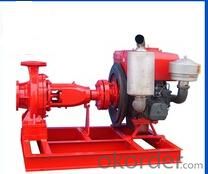
4. Centrifugal Water Pump Specification
Item | Diesel Water Pump |
Diesel Pump | Agricultural Irrigation Desel Water Pump |
Model | IS |
Material | Cast iron |
Mode | Horizontal |
Color | Blue and adjustable |
Theory | Centrifugal Pump |
Structure | Single-stage Pump |
Usage | water |
Power | Electric |
Standard or Nonstandard | Standard |
Fuel | Diesel |
Pressure | High Pressure |
Application | Transporting pure water or liquids |
Outlet Diameter | 32-250mm |
Capacity | 6.3-400m3/h |
Head | 5-125m |
Rotation Speed | 1450-2900r/min |
Power | 0.55-110kW |
Warrenty | 1 Year |
Certificate | ISO9001 |
Feature | High efficiency,Easy maintenance |
5.FAQ
① What is your product range?
Centrifugal pump, slurry pump, gravel pump, clean water pump, sewage pump, chemical pump, single stage
pump, double suction pump, industry pump, oil pump, paper pulp pump, mud pump, self-priming pump, pipe
water pump, boiler water pump, etc.
② Are you a manufacturer?
Yes, we have been in manufacturing and marketing industry centrifugal pump over 20 years.
③ What information should I let you know if I want to get a quotation?
Pump capacity, pump head, medium, medium temperature, pump material, quantity, if possible, please also
provide the pump model you are using now, price will be calculated as per the pump model, if not, we willrecommend relevant product for reference.
- Q: Working principle and diagram of axial piston pump with pressure compensation variable
- Adjust the flow characteristics, the first limit screw to the top, according to the flow and pressure changes in the required range, adjusting the spring set, the initial flow pressure began to change to meet the requirements, then the limit screw to the ultimate pressure when the flow is no longer changed, the relationship between flow and pressure the changes are determined by the pump itself.
- Q: What is the Rhodes pump?
- The ultimate vacuum of roots pump depends on the pump structure and manufacturing accuracy, and also depends on the limit vacuum of the front pump. In order to increase the limit vacuum of the pump, the roots pump can be used in series. The working principle of roots pump is similar to roots blower. As the rotor continues to rotate, the gas is pumped from the intake air to the space between the rotor and the pump housing V0, and then discharged through the exhaust port. Since the V0 space is fully enclosed after inhalation, the gas in the pump cavity does not compress and expand. But when the top of the rotor turns off the edge of the exhaust and the V0 space communicates with the exhaust side, the gas pressure at the exhaust side is higher, and a part of the gas flows back into the space V0, causing a sudden increase in the gas pressure. As the rotor continues to rotate, the gas is expelled from the pump. Roots pump in the pump cavity, there are two "8" shape of the rotor perpendicular to each other on a pair of parallel axis, by a transmission ratio of 1 of a pair of gear belt movements synchronous reverse movement of each other. In the rotor, the rotor and the pump housing between the wall to maintain a certain gap, you can achieve high speed operation.
- Q: What is the lift of diaphragm pump?
- Diaphragm pump lift is different from the centrifugal pump, refers to the diaphragm pump can raise the height of water, the unit is meters water column. Lift depends on the size of the outlet pressure, the pressure per kilogram is equivalent to 10 meters height
- Q: What's the difference between non negative pressure and variable frequency water pump?
- Re pressure to a given pressure pressure zone water supply, than frequency conversion water pump energy savingFrom a health perspective, a water tank variable frequency water pump, water tank and the atmosphere, easy occurrence of water pollution two, no negative pressure equipment without negative pressure tank and pump and valve fittings etc., no water tank, the whole process of water supply of water is completed in a closed system, with air contact to avoid two pollution problems water supply.From the management point of view, no negative pressure is fully automatic intelligent operation, reduce management costs, no water tank, reducing the trouble of tank cleaning. No negative pressure is the upgrading of variable frequency water pump products
- Q: The main factors affecting the performance of centrifugal pumps
- The low specific speed pump, on the other hand, is suitable for smaller flow and higher lift. When the pump outlet pipe diameter at the same time, if the two pumps flow similar, smaller than the speed of small head, shaft power consumption is also large. Generally speaking, the centrifugal pump with smaller revolutions than the impeller has a narrow outlet width and a large outer diameter, and the channel formed by the blade is narrow and long. If the ratio of revolutions is large, the impeller outlet is wide and the outer diameter is small, then the flow passage is short and wide.I hope my answer will be helpful to you. I hope to adopt it!
- Q: Is vane pump good or gear pump good?
- The main working parts of vane pump is provided with a plurality of sliding vane rotor, when the rotor rotates, the eccentric configuration of stator cavity contour or rotor, blade sliding slot in leaves due to volume changes, resulting in the suction effect. The similarities are: 1, rotary type positive displacement pump has self-priming ability, but are not allowed to do; 2, with continuous flow pulsation, but also have flow and pressure; 3, the theory of flow is determined by the working parts of the size and speed, has nothing to do with discharge pressure; 4, rated discharge size, pressure and working parts mainly depends on the pump speed is independent of the sealing parts and bearing capacity; differences: 1) gear pump structure is more simple, reliable, low price; vane pump has complicated structure and high manufacturing precision parts, the blade is easy to get stuck, more sensitive to the oil clean degree and viscosity.
- Q: What is a feed pump?
- Feeding the role of the pump is to make the injection pump inlet pressure, increase the injection pump inlet pipe flow rate, in order to ensure high pressure water injection pump has sufficient supply.
- Q: What are the main performance parameters of the pump?
- RPM revolutions per minute. In N, the unit is R / minThe power delivered by the shaft power prime mover to the pump shaft. In P, the unit is kW.The ratio of useful power to shaft power of an efficient pump. With ETA said. It is an indicator of the degree of perfection of the pump in terms of hydraulic power
- Q: What is the cause of the damage of pump bearings?
- In high-speed equipment, the most likely damage to bearings is high temperature.
- Q: What is the distance between the pump and the wall?
- What do you mean by that? If your pump is parallel to the wall! Then, the wall of the pump near the wall is usually 500mm. This is an empirical data, considering the import pipe length, pump maintenance and motor heat dissipation and other aspects of the situation to determine. Dozens of pumps installed in our company are placed in this size! Hope to be of help to you.
Send your message to us
Vertical Centrifugal Water Pump for Agriculture
- Loading Port:
- Shanghai
- Payment Terms:
- TT OR LC
- Min Order Qty:
- 1 set
- Supply Capability:
- 10000 set/month
OKorder Service Pledge
OKorder Financial Service
Similar products
Hot products
Hot Searches
Related keywords
